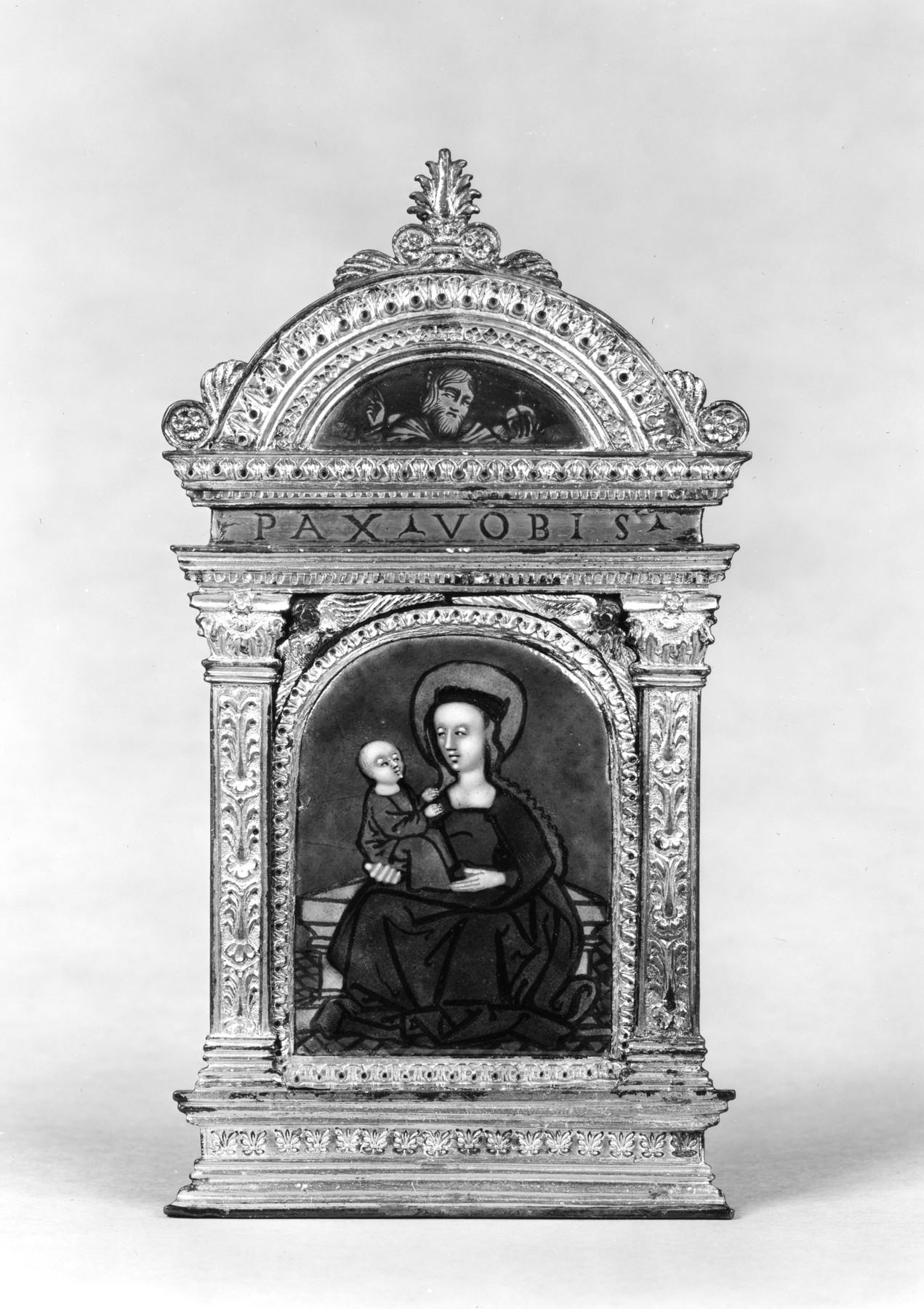Virgin and Child
(Renaissance Europe )
The Virgin wears a diadem and is dressed in a blue robe and a purple mantle. The child Christ wears a long green robe. The group is seated on a low bench resting on a tiled floor.
At an early date this plaque was exported to northern Italy, where it was set in a nielloed gilt-metal frame. God the Father appears in the nielloed plaque of the small tympanum and the band underneath is inscribed in niello: PAX VOBIS. The frame is decorated with acroteria, thorny acanthus leaves, egg-and-dart, dentils, cherubs' heads, palmettes, and flanked by two pilasters, their capitals adorned with acanthus leaves and two rosettes, their shafts with elongated leafy motifs.
Provenance
Provenance (from the French provenir, 'to come from/forth') is the chronology of the ownership, custody, or location of a historical object. Learn more about provenance at the Walters.
Valerio Collection (?); Sale, Paris, December 18, 1893; Jacques Seligmann, Paris [date and mode of acquisition unknown]; Henry Walters, Baltimore, 1911, by purchase; Walters Art Museum, 1931, by bequest.
Geographies
Italy
(Place of Origin)
France, Limoges (Place of Origin)
Measurements
Pax H: 6 11/16 x W: 3 9/16 in. (17 x 9 cm); Plaque H: 2 5/8 x W: 1 15/16 in. (6.7 x 5 cm)
Credit Line
Acquired by Henry Walters, 1911
Location in Museum
Not on view
Accession Number
In libraries, galleries, museums, and archives, an accession number is a unique identifier assigned to each object in the collection.
In libraries, galleries, museums, and archives, an accession number is a unique identifier assigned to each object in the collection.
44.216


